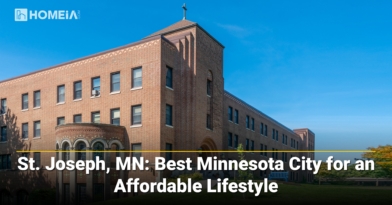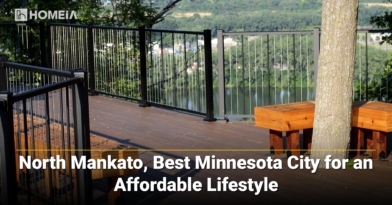Cheapest Places to Live in Minnesota
- Local Editor:Local Editor: Ellie Vondracek
Published: Aug 21, 2025
- Category: City Living Guide
Many residents love Minnesota for its natural beauty, vibrant communities, and a strong sense of Midwestern hospitality. And while some may think that living in such a place means paying a high cost, calling the Land of 10,000 Lakes home doesn’t have to come with a hefty price tag.
Whether you’re drawn to the state’s thriving job market, excellent schools, or abundant outdoor recreation, Minnesota’s cities and towns each offer something unique for budget-conscious residents. You can find cultural activities and events along with career opportunities in urban areas, while smaller communities are full of close-knit neighborhoods, scenic parks, and a slower pace of life. If you’re looking to maximize your budget while maintaining a high quality of life, Minnesota is filled with affordable gems and cost-effective living options for families, young professionals, and retirees seeking budget-friendly communities.
If you’re searching for the cheapest places to live in Minnesota, want to find the best cities for families on a budget, or are looking for affordable towns with great schools and amenities, this comprehensive guide will help you discover your top budget-friendly options.
Before making a move to one of the least expensive places to live in Minnesota, consider a few key factors first:
- Taxes: Minnesota has a progressive income tax with rates ranging from 5.35% to 9.85%. The state sales tax is 6.875%, and property taxes vary by county and city. As with all states, some areas are more budget-friendly than others.
- Climate: Minnesota experiences all four seasons, including cold, snowy winters and warm, pleasant summers. Heating and cooling costs are important to keep in mind while planning your budget.
- Cost of Living: While the Twin Cities metro area is more expensive, many cities and towns across Minnesota offer a cost of living well below the state and national averages. These locations may feature more affordable housing, lower rents, and lower property taxes.
- Lifestyle: Minnesotans enjoy a high quality of life. They have abundant access to outdoor activities like fishing, boating, hiking, and winter sports, as well as vibrant arts, music, and culinary scenes that don’t strain the budget.
The Pros and Cons of Living in Minnesota
Pros and Cons of Living in Minnesota include more than cold winters and hockey. Enjoy scenic lakes, great schools, a strong economy, and rich cultural life. Whether you’re drawn by the outdoors or career opportunities, Minnesota offers a high quality of life with both urban excitement and small-town charm.
Table of Contents:
Check out 7 of the most affordable places to live in Minnesota:
Table: The 7 Most Affordable Places to Live in Minnesota (Lowest to Highest HOMEiA Score)
| Rank | City | HOMEiA Score | Median Home Value | Median Rent | Population | Key Highlights |
| 1 | Duluth | 84 | $262,257 | $1,405 | 87,680 | Lake Superior views, urban amenities |
| 2 | Marshall | 87 | $223,661 | $1,000 | 13,680 | University town, diverse economy |
| 3 | Albert Lea | 89 | $161,675 | $850 | 17,664 | Affordable rents, healthcare access |
| 4 | Hibbing | 90 | $144,447 | $925 | 15,849 | Mining heritage, low cost of living |
| 5 | Fairmont | 91 | $169,552 | $1,721 | 10,438 | Lakeside living, family-friendly |
| 6 | Austin | 91 | $175,687 | $891 | 25,253 | Growing economy, affordable homes |
| 7 | Thief River Falls | 92 | $198,436 | $1,721 | 8,525 | Low home prices, strong job market, outdoors |
What Makes These Budget-Friendly Minnesota Cities Stand Out?

A. Affordable Housing: Median home values and rents in these cities are significantly below the state average, making homeownership and renting accessible for budget-conscious residents. Whether you’re searching for cheap homes for sale in Minnesota or low-cost rental options, these communities offer some of the best deals in the Midwest.
B. Strong Job Markets: Each city provides employment opportunities in key industries such as healthcare, education, manufacturing, agriculture, and local government. Residents benefit from short commute times, local job stability, and, in many cases, access to larger employment centers nearby.
C. Quality Education: Many of these affordable cities have public schools rated above the state average along with access to community colleges, technical schools, and respected universities. This makes them ideal for families seeking quality educational opportunities for their children and adults looking for career advancement.
D. Safe and Family-Friendly: Low crime rates, abundant parks, and frequent community events make these cities great for families and retirees seeking affordable, secure living. Neighborhoods are often close-knit, with a welcoming atmosphere that supports both newcomers and long-time residents.
E. Lifestyle and Recreation: Residents enjoy a mix of classic Minnesota outdoor activities—fishing, boating, hiking, biking, and winter sports—as well as arts, culture, and local festivals. Whether you’re drawn to lakeside living, scenic trails, or vibrant downtowns, these cities offer a high quality of life without breaking the bank.
7 Factors Rank St. Joseph as one of the Most Affordable Cities to Live in Minnesota
This central Minnesota town of 7,000 has an alluring natural setting and opportunities for education and employment. Its proximity to two metro areas offers even more possibilities for jobs, entertainment and recreation. Within a 90-minute drive to the international MSP airport…
1. Duluth

HOMEiA Score: 84/100
Population: 87,680
Median Home Value: $262,257
Median Rent: $1,405
Located on the shore of Lake Superior, Duluth is a vibrant port city that combines urban amenities with breathtaking natural beauty. The city’s cost of living is 15% below the national average, and it offers a wide range of housing options, from historic hillside homes to modern apartments overlooking the water. Duluth’s economy is diverse, and its neighborhoods range from bustling downtown districts to quiet, tree-lined streets.
A. Size and Population:
Duluth covers 87.4 square miles and has a population density of 1,003 people per square mile. As a regional hub for northeastern Minnesota, it attracts residents from nearby rural areas for shopping, healthcare, and entertainment. The city is known for its friendly, welcoming spirit and strong sense of community pride.
B. Cost of Living and Housing:
The median household income is $66,263. Duluth’s home price-to-income ratio is 3.9, and rents are affordable compared to other large cities in Minnesota. The city’s housing market offers options for every stage of life, from starter homes to luxury condos, making it accessible for first-time buyers and budget-minded renters.
C. Employment Prospects:
Essentia Health, St. Luke’s Hospital, University of Minnesota Duluth, and the Port of Duluth are some of the city’s largest employers. The city’s economy is built around healthcare, education, shipping, tourism, and technology. Duluth’s port is the largest on the Great Lakes, supporting jobs in logistics and trade. The average commute is 17 minutes, and the city’s job market is stable and growing.
D. Unique Attributes and Lifestyle:
Duluth is known for its lakefront parks, hiking and biking trails, and flourishing arts scene. The city hosts festivals and concerts; it also offers year-round outdoor recreation, including skiing at Spirit Mountain and sailing on Lake Superior. Canal Park, with its shops, restaurants, and iconic Aerial Lift Bridge, is a favorite destination for residents and visitors alike. Duluth’s combination of natural beauty, cultural amenities, and affordable living makes it a top choice for those seeking both adventure and comfort on a budget.
E. Education and Safety:
Duluth Public Schools and several colleges serve the city, including the University of Minnesota Duluth and Lake Superior College. The city is recognized for its safe neighborhoods, active neighborhood associations, and high quality of life. Duluth’s public schools offer a variety of specialized programs, and the city’s crime rate is lower than the national average for cities of a similar size.
Lake City, MN: Best Minnesota City for an Affordable Lifestyle
Known as Minnesota’s South Shore, Lake City is a stunning location with water, river bluffs, valleys and all the beautiful scenery that accompanies these marvelous resources…
2. Marshall
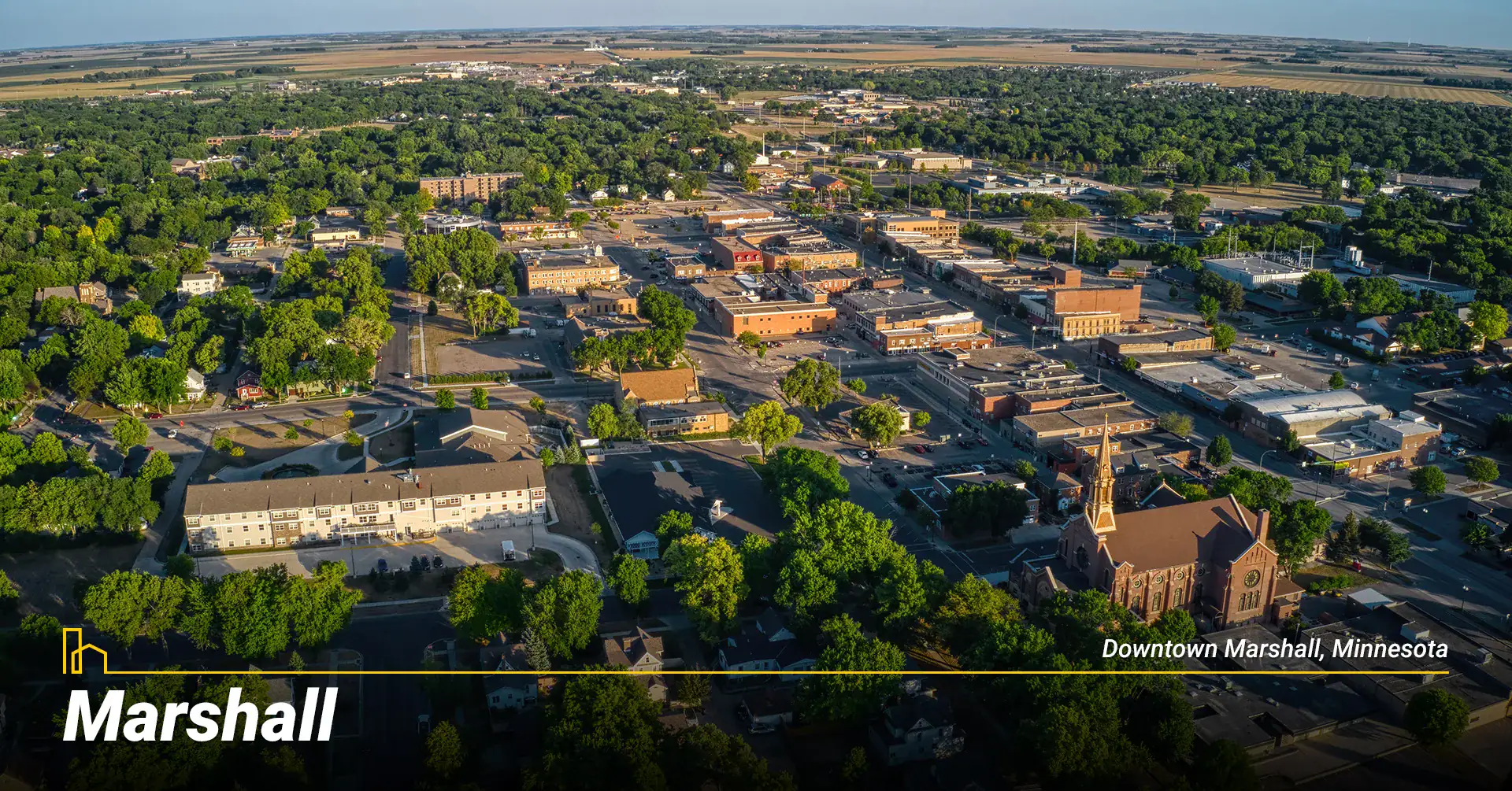
HOMEiA Score: 87/100
Population: 13,680
Median Home Value: $223,661
Median Rent: $1,000
Marshall, in southwestern Minnesota, is a thriving university town that balances small-town charm with a diverse, growing economy. The city’s cost of living is 14% below the national average, and it’s known for its friendly atmosphere and strong civic engagement. Marshall’s active downtown features local shops, restaurants, and regular community events that provide affordable entertainment.
A. Size and Population:
Covering 10.2 square miles, Marshall has a population density of 1,341 people per square mile. The city’s population is diverse, thanks in part to the presence of Southwest Minnesota State University, which brings students, faculty, and cultural events to the community. Marshall’s neighborhoods are clean, safe, and well-maintained, with parks and green spaces throughout.
B. Cost of Living and Housing:
Marshall’s median household income is $61,000. Rental rates are affordable for students, families, and retirees seeking budget-friendly options with a home price-to-income ratio of 3.7. The city’s housing stock includes single-family homes, apartments, and townhomes. New developments support continued population growth.
C. Employment Prospects:
Major employers include Southwest Minnesota State University, Schwan’s Company, and Avera Marshall Regional Medical Center. The city’s economy is driven by education, food processing, healthcare, and retail. Marshall’s business community is active and supportive with resources available for entrepreneurs and job seekers. The average commute is under 15 minutes, and the unemployment rate is consistently below the state average.
D. Unique Attributes and Lifestyle:
Marshall offers university-town amenities, parks, and cultural events without the high costs of larger college towns. The city’s Red Baron Arena & Expo hosts sports and entertainment, and the Lyon County Fair is a highlight each summer. Residents enjoy a lively downtown, farmers market from July through October, and easy access to outdoor recreation, including nearby Camden State Park. Marshall’s blend of affordability, opportunity, and community spirit makes it a standout in southwestern Minnesota.
E. Education and Safety:
Marshall Public Schools and Southwest Minnesota State University serve the area, offering a range of academic and extracurricular programs. The city is known for its safe neighborhoods, low crime rate, and active community policing. Marshall’s schools are highly rated, and the city invests in youth programs and lifelong learning.
7 Factors Rank New Ulm as one of the Cheapest Cities to Live in Minnesota
Here are 7 factors that make New Ulm became one of best cities for an Affordable Lifestyle. This small city of 13,000 is an energetic tribute to its German settlers whose traditions still prevail today. It’s an affordable town and a safe place to call home...3. Albert Lea

HOMEiA Score: 89/100
Population: 17,664
Median Home Value: $161,675
Median Rent: $850
Albert Lea, located near the Iowa border in southern Minnesota, is a lakeside city known for its affordable rents, strong healthcare sector, and welcoming community. The city’s cost of living is 20% below the national average, and its scenic setting on Fountain Lake and Albert Lea Lake draws residents who appreciate outdoor living on a budget.
A. Size and Population:
With a population density of 1,227 people per square mile, Albert Lea extends 14.4 square miles. The city’s neighborhoods are a mix of historic homes and new developments, and the community is known for its friendly, neighborly vibe that welcomes budget-conscious families.
B. Cost of Living and Housing:
The median household income is $44,210. Most rental units are below $1,000 per month, and the city has a home price-to-income ratio of 3.7. Property taxes are moderate, and the city’s housing market is stable, offering options for buyers at every budget.
C. Employment Prospects:
Major employers include Mayo Clinic Health System, Albert Lea Area Schools, and Cargill. The economy is supported by healthcare, education, manufacturing, and retail. Albert Lea’s location at the intersection of Interstates 35 and 90 makes it a regional hub for logistics and transportation jobs. The average commute is 12 minutes.
D. Unique Attributes and Lifestyle:
Albert Lea is known for its lakes, parks, and historic downtown that offers affordable shopping and dining. The city offers abundant outdoor recreation, including boating, fishing, and hiking along the Blazing Star Trail. Community events like the Freeborn County Fair and Wind Down Wednesday concerts bring residents together year-round. Albert Lea’s revitalized downtown features unique shops, restaurants, and a thriving arts scene.
E. Education and Safety:
Albert Lea Area Schools offers a range of academic and extracurricular programs. The area is recognized for its safe neighborhoods, low crime rate, and strong sense of community. Albert Lea’s schools have a reputation for academic excellence, and the city’s investment in parks and recreation supports healthy, active living.
7 Factors That Make North Mankato one of The Most Affordable Cities in Minnesota
North Mankato is a small town in southern Minnesota that appeals to people of all ages. Because it lies along the banks of the Minnesota River, it provides a scenic backdrop for the everyday activities of residents and visitors. The town ranks well for education, healthcare, housing and a lower-than-expected cost of living…
4. Hibbing
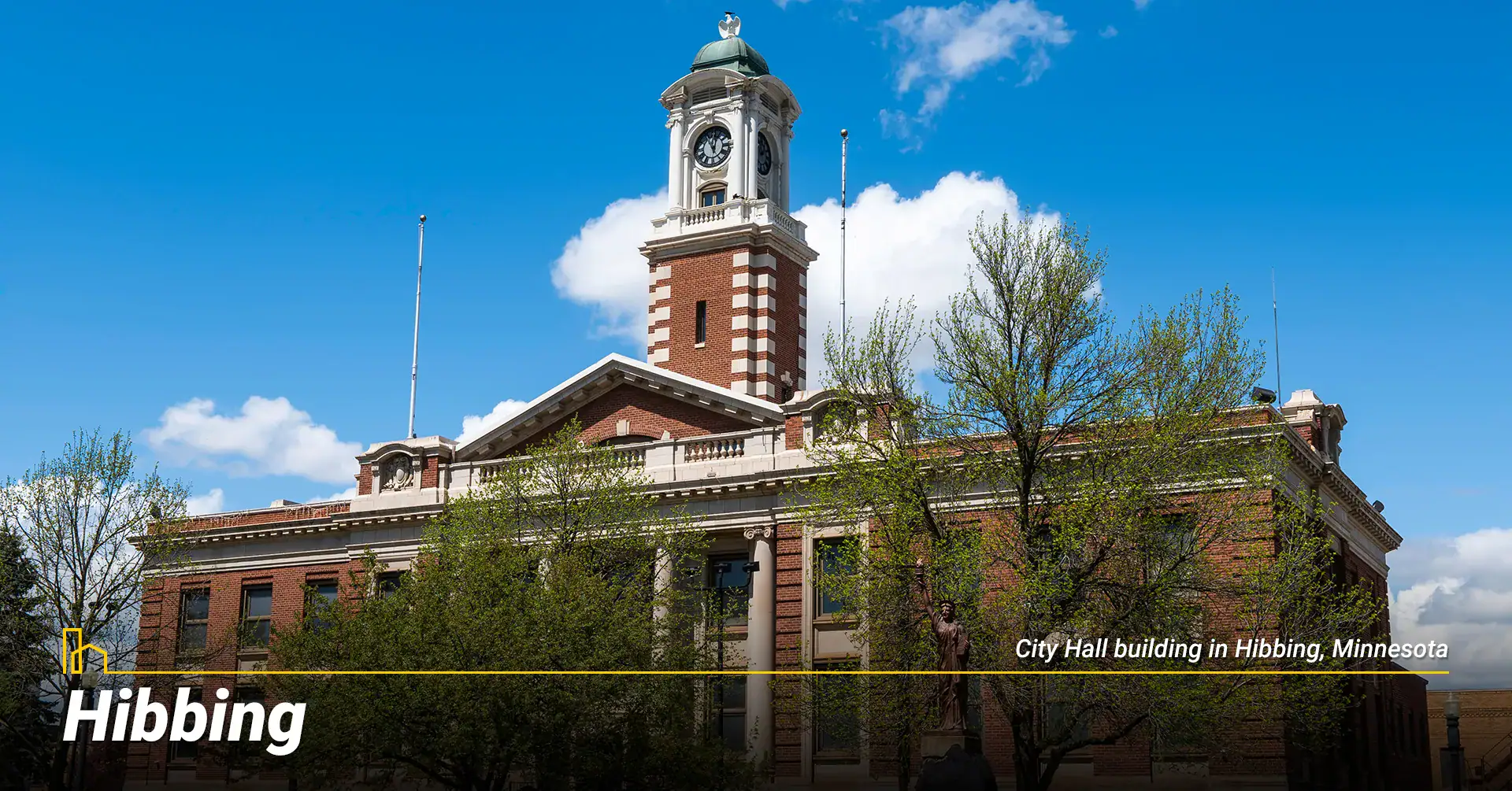
HOMEiA Score: 90/100
Population: 15,849
Median Home Value: $144,447
Median Rent: $925
Located on the Iron Range in northern Minnesota, Hibbing is a city with deep mining roots and a strong sense of community. The cost of living 15% below the national average, and it is one of the most affordable places to buy a home in Minnesota. Hibbing’s historic downtown and neighborhoods reflect the city’s rich heritage while offering budget-friendly living.
A. Size and Population:
Hibbing covers 186.5 square miles, making it one of the largest cities by area in Minnesota, and as such, it has a low population density. The city’s neighborhoods are quiet and safe; tree-lined streets and well-kept homes are available at affordable prices.
B. Cost of Living and Housing:
Hibbing’s median household income is $55,463. With a home price-to-income ratio of 2.6, rents are among the lowest in Minnesota. The city’s affordable housing market attracts both first-time buyers and retirees, and property taxes are among the lowest in the region. Hibbing’s cost of living and housing affordability make it ideal for budget-conscious residents.
C. Employment Prospects:
Hibbing Taconite, Fairview Range Medical Center, and Hibbing Public Schools are all major employers in the city. Anchored by mining, healthcare, education, and retail, Hibbing’s business community is resilient and focuses on supporting local jobs and entrepreneurship. The average commute is 13 minutes.
D. Unique Attributes and Lifestyle:
Hibbing is the hometown of musician Bob Dylan, NBA player Kevin McHale, and MLB player Roger Maris. It is also home to the world’s largest open-pit iron mine. Residents enjoy outdoor recreation, music festivals, and a friendly, small-town atmosphere with low living costs. As part of the city’s rich mining history, the Hull Rust Mahoning Mine View offers panoramic views of the Iron Range, and the Hibbing Historical Society Museum preserves the city’s unique story. Hibbing’s parks, golf courses, and community events provide year-round entertainment and relaxation.
E. Education and Safety:
Hibbing Public Schools provides public education in the area, and Hibbing Community College offers higher education and workforce training. The city has a low crime rate, active neighborhood watch programs, and a strong sense of civic pride. Hibbing’s schools are known for their supportive teachers and wide range of academic and extracurricular offerings.
7 Factors Rank Little Falls as one of the Cheapest Cities for living in Minnesota
Named for the beautiful Falls on the Mississippi River, this small city of 8,700 is welcoming and easy to call home. It’s located mid-state along the Mississippi River and just a two-hour drive from the Twin Cities metro. So, even the big city is accessible…
5. Fairmont

HOMEiA Score: 91/100
Population: 10,438
Median Home Value: $169,552
Median Rent: $1,721
A picturesque lakeside community, Fairmont is located in southern Minnesota. It offers affordable living, strong schools, and multiple opportunities for recreation. The city’s cost of living is 27% below the national average, and its five lakes provide a stunning backdrop for daily life.
A. Size and Population:
With five beautiful lakes within city limits, Fairmont stretches over 16.5 square miles and has a low population density. The city’s neighborhoods are peaceful and family-friendly. They include a mix of historic homes and new developments available at budget-friendly prices.
B. Cost of Living and Housing:
The median household income is $57,000. Fairmont’s home price-to-income ratio is 2.97, and the city boasts some of the most affordable homes for sale in Minnesota. Budget-conscious buyers are also attracted to Fairmont’s property taxes, which are lower than in larger cities. Rental rates in the city are also reasonable.
C. Employment Prospects:
In the city, major employers include Mayo Clinic Health System, 3M, and Fairmont Area Schools. The economy is supported by healthcare, manufacturing, agriculture, and retail. Fairmont’s business community proactively attracts new employers and supports local entrepreneurs. The average commute is under 10 minutes.
D. Unique Attributes and Lifestyle:
Fairmont is known as the “City of Lakes,” offering residents easy access to boating, fishing, and parks. The Interlaken Heritage Days festival and summer concerts in the park are just a few examples of the community’s year-round events. Residents enjoy an active downtown, farmers markets, and easy access to outdoor recreation, including golf courses, trails, and campgrounds. Fairmont’s combination of natural beauty, affordability, and community spirit makes it a hidden gem in southern Minnesota.
E. Education and Safety:
Fairmont Area Schools offers strong academic, athletics, and arts programs. The area is known for its safe, family-friendly neighborhoods, low crime rate, and active community organizations. Fairmont’s schools enjoy high ratings, and the city supports multiple youth and adult community education programs.
The Pros and Cons of Living in Minnesota
Pros and Cons of Living in Minnesota include more than cold winters and hockey. Enjoy scenic lakes, great schools, a strong economy, and rich cultural life. Whether you’re drawn by the outdoors or career opportunities, Minnesota offers a high quality of life with both urban excitement and small-town charm.
6. Austin
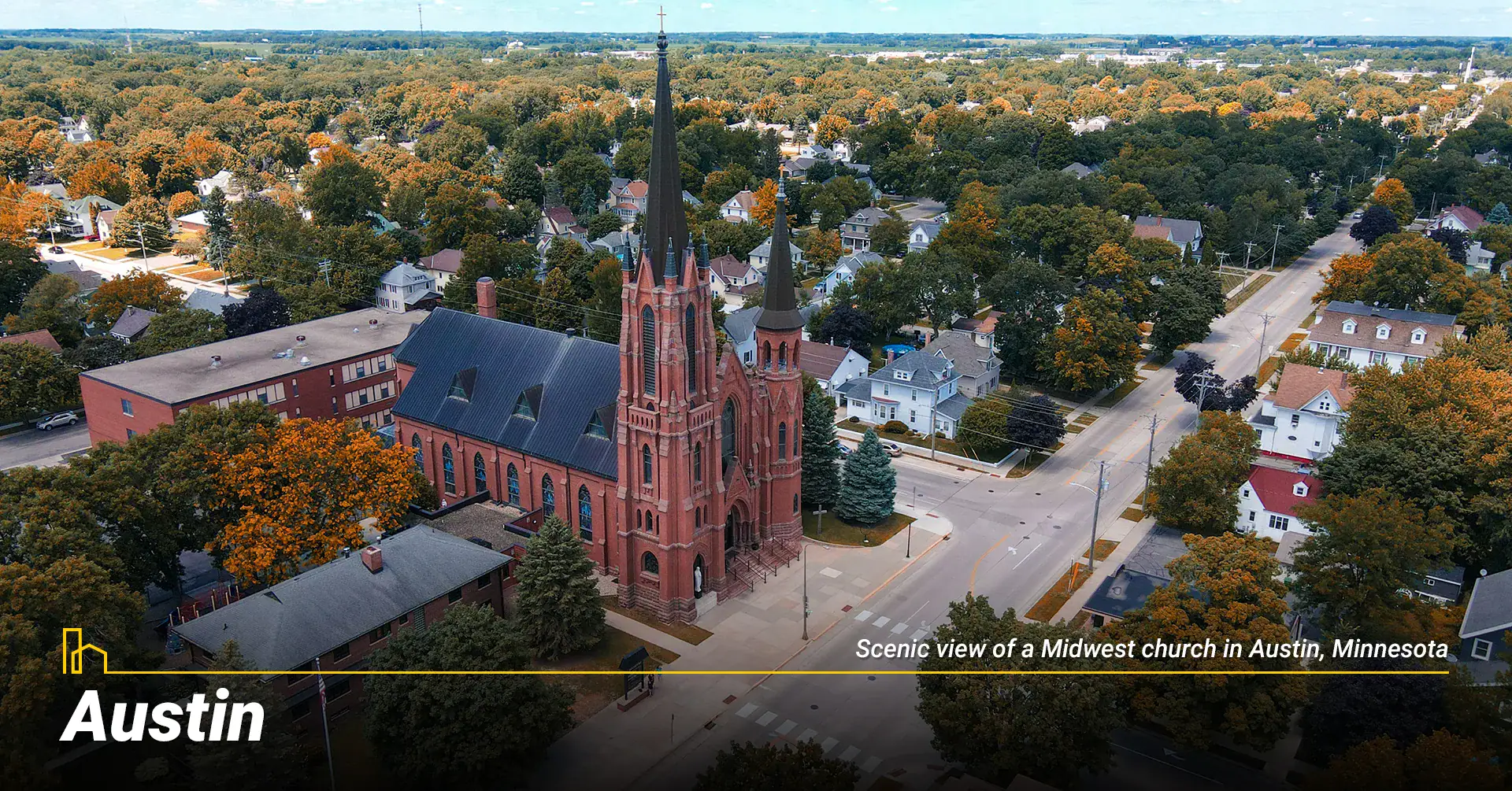
HOMEiA Score: 91/100
Population: 25,253
Median Home Value: $175,687
Median Rent: $891
Austin, located in southern Minnesota, is a dynamic city known for its affordable homes, growing economy, and welcoming community. The city’s cost of living is 27% below the national average, and it is home to a diverse population with a strong sense of civic pride and budget-friendly lifestyle options.
A. Size and Population:
Officially measuring 13.5 square miles, Austin has a population density of 1,871 people per square mile. The city’s neighborhoods are a blend of historic districts and new developments. The city enjoys tree-lined streets and well-maintained parks that provide affordable recreation.
B. Cost of Living and Housing:
The median household income is $58,000. Austin’s home price-to-income ratio is 3.0, and the income-to-rent ratio is highly favorable, making it one of the best cities in Minnesota for affordable housing. Property taxes in Austin are moderate, and rental rates are among the lowest in the state.
C. Employment Prospects:
Hormel Foods, Mayo Clinic Health System, and Austin Public Schools are the city’s major employers. The city’s economy is diverse, with opportunities in food processing, healthcare, education, and retail. Austin’s business community is supportive of startups and small businesses, and the average commute is just 13 minutes.
D. Unique Attributes and Lifestyle:
Home to the SPAM Museum, Austin also has numerous parks and a thriving arts scene that provides affordable entertainment. Residents enjoy community festivals, local dining, and easy access to lakes and trails. The city’s Jay C. Hormel Nature Center offers hiking, birdwatching, and environmental education, while downtown Austin features unique shops and restaurants. Austin’s blend of affordability, opportunity, and community engagement makes it a top choice for families and professionals.
E. Education and Safety:
Riverland Community College provides higher education and workforce training, and Austin Public Schools serves as the local public school district. The city is known for its safe neighborhoods, active neighborhood associations, and strong community involvement. Austin’s schools are highly rated, and the city also invests in youth programs, arts, and sports.
Maple Grove: Best Minnesota City for Buying a House and Raising a Family
Do you want to buy a house in Minneosta? Here is 7 Key Factors that make Maple Grove one of the Best MN Cities for Buying a House and Raising a Family…
7. Thief River Falls
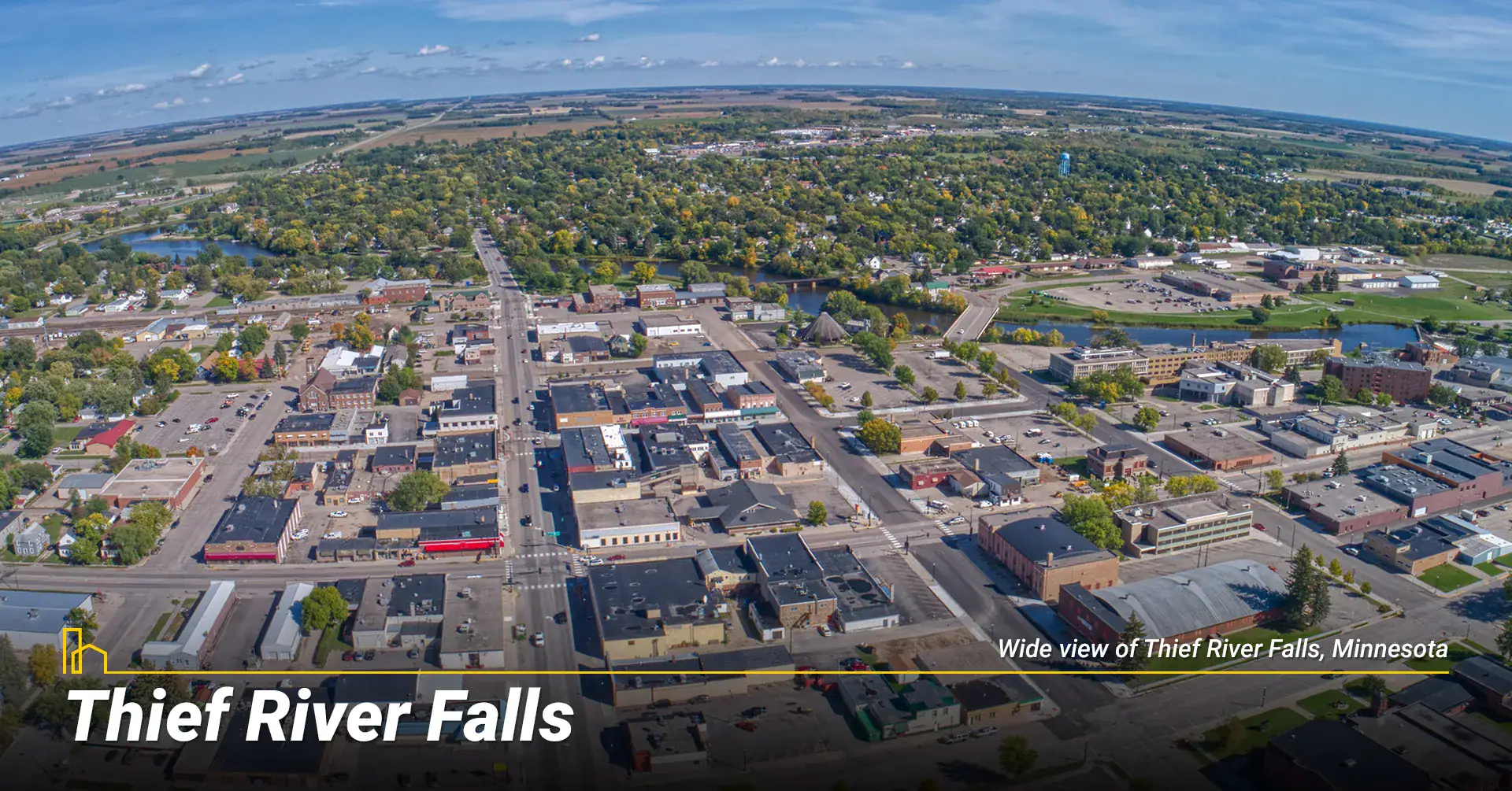
HOMEiA Score: 92/100
Population: 8,525
Median Home Value: $198,436
Median Rent: $1,721
Thief River Falls consistently ranks among the least expensive places to live in Minnesota. This city in northwestern Minnesota offers a strong job market, affordable housing, and a vibrant community spirit. Its cost of living is 21% below the national average, making it ideal for families and first-time homebuyers seeking maximum value.
A. Size and Population:
Thief River Falls extends 5.6 square miles and has a moderate population density. The community is welcoming, with a small-town feel and access to outdoor recreation. The city’s neighborhoods are quiet, safe, and close to parks and schools.
B. Cost of Living and Housing:
The median household income is $71,781. Thief River Falls has one of the lowest home price-to-income ratios at 2.8, and the income-to-rent ratio is favorable for both buyers and renters. Property taxes are below the state median, and energy costs are among the lowest in Minnesota. The city’s housing market is stable and has options for every budget.
C. Employment Prospects:
Major employers include Digi-Key Electronics, Arctic Cat, and Northland Community & Technical College. The city’s diverse economy supports jobs in manufacturing, education, and healthcare. As a regional employment center, the city draws workers from surrounding communities. The average commute is under 10 minutes, and the unemployment rate is consistently low.
D. Unique Attributes and Lifestyle:
Known for its riverfront parks, fishing, and snowmobiling opportunities, Thief River Falls residents have multiple options for year-round affordable recreation. The city hosts annual festivals, including the Pennington County Fair and RiverFest, and has a vibrant downtown with shops and restaurants. The Red Lake River, golf courses, and nearby wildlife areas provide outdoor enthusiasts access to nature. Thief River Falls’ combination of affordability, opportunity, and community spirit makes it a standout in northwestern Minnesota.
E. Education and Safety:
Thief River Falls Public Schools is the local public school system, and Northland Community & Technical College provides higher education and workforce training. The city maintains a low crime rate, active neighborhood watch programs, and a strong sense of civic engagement. Thief River Falls’ schools are known for their supportive teachers, strong academic programs, and commitment to student success.
Conclusion: Why Affordable Living in Minnesota Is Achievable
Minnesota proves that quality living doesn’t require a hefty budget. These seven cities demonstrate that the least expensive places to live in Minnesota offer excellent schools, safe communities, and abundant recreational opportunities. From lakeside living to university towns, each destination provides unique benefits while maintaining low costs. Families, professionals, and retirees seeking budget-friendly communities with Midwestern charm can find affordable living in these cities.
Recommended for you
Commonly Asked Questions about Affordable Living in MN
1. What is the cheapest place to live in Minnesota right now?
Thief River Falls is among the most affordable places to live in Minnesota in 2025, with a median home price under $200,000 and a cost of living well below the state average.
2. Which cities in Minnesota have the lowest rents?
Albert Lea, Hibbing, and Austin offer some of the lowest average rents in the state, often below $1,000 per month, making them ideal for budget-conscious renters.
3. Where is the lowest overall cost of living in Minnesota?
Cities like Thief River Falls, Austin, and Fairmont have the lowest overall cost of living, with affordable housing, utilities, and transportation costs.
4. What are the safest and most affordable places to live for families?
Marshall, Fairmont, and Albert Lea are frequently cited as safe and affordable for families, with strong schools, low crime rates, and family-friendly amenities.
5. How do utility and transportation costs compare in affordable Minnesota cities?
Utility costs are generally below the national average due to Minnesota’s energy resources. Many cities also offer short commutes and low transportation expenses.
6. What job opportunities are available in the most affordable cities?
Major industries include healthcare, education, food processing, manufacturing, and retail. Many cities have strong local economies and growing job markets with competitive wages.
7. Are there affordable cities within commuting distance to Minneapolis or St. Paul?
While the Twin Cities metro is more expensive, cities like Albert Lea and Austin offer affordable living and are within a two-hour drive to the metro area.
8. How do property taxes and homeownership rates compare in these cities?
Property taxes are generally lower in smaller cities, plus homeownership rates are above the state average in most affordable cities, reflecting accessible housing markets.
9. What is the quality of schools in affordable Minnesota cities?
Many affordable cities, including Marshall, Fairmont, and Hibbing, have highly rated public schools and access to community colleges or universities for continued education.
10. What lifestyle and recreational opportunities are available in these affordable cities?
Affordable entertainment and recreation is abundant year-round. Residents enjoy lakes, parks, trails, festivals, and community events, as well as access to fishing, boating, and winter sports throughout the year, providing affordable entertainment and recreation year-round.
Alexandria: Best Minnesota City for Buying a House and Raising a Family
Do you want to buy a house in Minneosta? Here is 7 Key Factors that make Alexandria one of the Best MN Cities for Buying a House and Raising a Family…
Ellie Vondracek is an educator, writer, and curriculum developer from the Land of 10,000 Lakes (Minnesota). One of her favorite places in Minnesota is the beautiful Itasca State Park, where she loves walking across the headwaters of the Mississippi River.
HOMEiA is a city guide site where visitors can find detailed information about communities of interest. HOMEiA’s City Guides, created in partnership with local writers and editors, are curated lists of the best, safest, and most affordable places to live. The guides feature the HOMEiA Score, a proprietary index that rates communities on such factors as housing costs, education, employment, etc.
HOMEiA.com aims to be the premier site for people planning to relocate, providing them with insightful content and connecting them with skilled real estate professionals.
We also empower real estate professionals to establish or strengthen their web presence by highlighting their experience, knowledge and achievements. If you’re selected to join our list of certified real estate professionals, you will distinguish yourself from your peers — and earn HOMEiA’s support.
If you believe in HOMEiA’s mission, please share our website with others.


